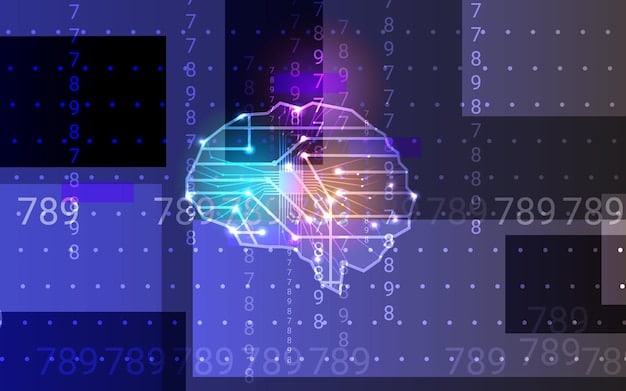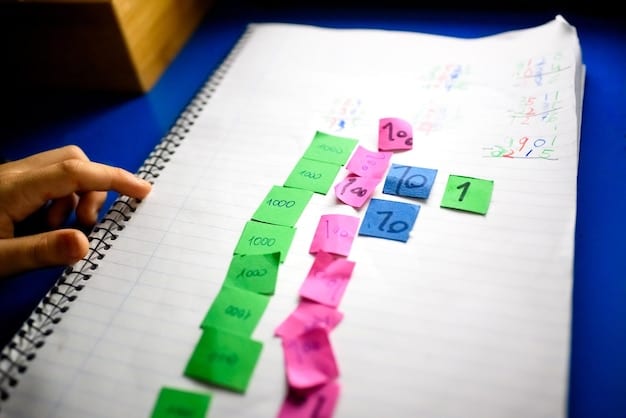Master the Phonetic Number System by 2025 for Test Success

The Phonetic Number System is a memory technique that converts numbers into consonant sounds, creating memorable words and phrases vital for standardized tests; act now to learn it before the end of 2025 and boost your test scores.
Unlock your memory potential with the Phonetic Number System before 2025 and excel on standardized tests. This powerful memory technique transforms numbers into memorable words, giving you an edge on exams.
Unlock Your Memory: The Phonetic Number System
Are you looking for a reliable technique to improve your memory and ace standardized tests? The Phonetic Number System (PNS) offers a transformative approach. By converting numbers into consonant sounds, you can create memorable words and stories. With standardized tests becoming increasingly competitive, mastering PNS before the end of 2025 can provide a significant advantage.

What is the Phonetic Number System?
The Phonetic Number System, also known as the Major System or the Phonetic Code, is a mnemonic technique used to memorize numbers. It works by converting numbers into consonant sounds, which are then used to create words and stories. This method turns abstract numbers into concrete, memorable concepts.
The Basic Principles
The PNS assigns a consonant sound to each digit from 0 to 9. Vowels are ignored and used as ‘glue’ to form meaningful words or phrases. This system leverages your brain’s natural ability to remember images and stories rather than rote memorization of numbers.
Why Use the Phonetic Number System?
This system enhances memory by leveraging the brain’s natural ability to recall images and stories. It is beneficial for students preparing for tests, professionals needing to remember data, and anyone wishing to enhance their cognitive capabilities.
- Improved Recall: Convert numerical data into memorable words and stories.
- Enhanced Memory: Use your brain’s natural ability to recall images.
- Versatile Application: Suitable for various fields, from academics to professional use.
In conclusion, the PNS is a versatile tool that greatly enhances memory and recall by converting numbers into memorable, story-driven images, making it invaluable for academics and professionals alike.
How the Phonetic Number System Works
To grasp the power of the Phonetic Number System (PNS), it’s essential to understand its mechanics. Each number from 0 to 9 is assigned one or more consonant sounds. By combining these sounds, you can form words that represent specific numbers.
The Code Table
Understanding the PNS code table is fundamental for effectively using the system. Here’s a basic breakdown:
- 0: s, z (as in “zero”)
- 1: t, d (one downstroke)
- 2: n (two downstrokes)
- 3: m (three downstrokes)
- 4: r (the end of “fouR”)
- 5: L (Roman numeral for 50)
- 6: ch, sh, j, soft g (sounds like “judge”)
- 7: k, hard g, hard c, q (k sound)
- 8: f, v (cursive f resembles the figure 8)
- 9: p, b (mirror images)
Forming Words
Once you know the code, you can start forming words. For example, the number 15 could be represented by the word “tale” (t=1, l=5). The vowels don’t have numerical value and are only used to form coherent words. This means “tail” would also represent 15.
Examples in Practice
Let’s say you need to remember the number 314. Using the PNS, you can create the word “dreamer” (m=3, d=1, r=4). The more vivid and imaginative the word, the easier it will be to remember.
In summary, the PNS works by assigning consonant sounds to numbers, creating words, and using these words as memorable representations of the original numbers.
Benefits of Learning the Phonetic Number System for Standardized Tests
The Phonetic Number System offers several advantages when preparing for and taking standardized tests. Not only can it improve memory, but it can also assist in various types of test questions where numerical data is critical.
Memorizing Formulas
Many standardized tests, particularly in math and science, require you to remember complex formulas. By using the PNS, you can transform these formulas into memorable phrases. For example, if you need to remember a formula involving the number 256, you could create the phrase “nails lodge” (n=2, l=5, sh=6).
Remembering Dates and Historical Facts
In subjects like history, remembering dates can be crucial. The PNS can turn these dates into vivid images. For instance, the year 1492 (when Columbus sailed to America) could be remembered as “tour upon” (t=1, r=4, p=9, n=2). Visualizing this phrase will help you recall the associated historical event.
Improved Speed and Accuracy
The PNS enhances the speed and accuracy of recall, which is particularly useful in timed standardized tests. The ability to quickly convert numbers into memorable words or phrases ensures you can access the required information faster than relying on rote memorization.
- Quick Recall: Faster access to information during timed tests.
- Versatile Application: Useful for formulas, dates, and numerical data.
- Increased Accuracy: Reduces errors associated with rote memorization.
Basically, the PNS equips test-takers with an efficient memory aid, reducing stress and boosting performance.
Mastering the Phonetic Number System Before 2025: A Timeline
Time is of the essence. Mastering the Phonetic Number System (PNS) before 2025 requires a structured approach and consistent effort. Here’s a timeline to guide you through the process:

Phase 1: Basic Understanding (1-2 Weeks)
Familiarize yourself with the core principles of the PNS. This involves understanding the code table and practicing converting single and double-digit numbers into consonant sounds.
Phase 2: Word Formation (2-4 Weeks)
Practice forming words from the numerical sounds. Aim to create vivid and memorable words for numbers ranging from 0 to 99. Use mnemonic techniques, such as association and visualization, to reinforce memory.
Phase 3: Application (4-6 Weeks)
Apply the PNS to relevant subjects or data you need to remember for standardized tests. Start with simpler tasks, such as memorizing dates and formulas, and gradually move onto complex information. Practice converting entire sections of notes into PNS-based memory aids.
- Consistent Practice: Dedicate time each day to practice conversion.
- Progressive Learning: Build from basic understanding to complex application.
- Regular Review: Continuously review and reinforce your knowledge.
Success depends on structured learning, consistent practice, and regular reviews. Stick to this timeline, and you’ll be well-prepared to leverage the PNS for test success before 2025.
Tips and Tricks for Effective Learning
While the Phonetic Number System (PNS) is a powerful memory aid, its effectiveness depends on how well you implement it. Here are some tips and tricks to maximize your learning and retention:
Visualization Techniques
The more vivid and imaginative your mental images, the easier they will be to recall. When you convert numbers into words, try to associate them with striking visual scenes. For example, if the number 81 represents “fade,” visualize a bright color slowly fading to gray.
Chunking and Linking
Break down long numbers into smaller, more manageable ‘chunks.’ Then, create a narrative that links these chunks together. Suppose you need to remember 1234. You could break it down into “tin” (12) and “ram” (34) and create a story like “A tin can hit a ram.”
Spaced Repetition
Review the associations regularly. Use spaced repetition techniques, where you gradually increase the intervals between reviews. This method helps reinforce the memory over the long term.
Use Flashcards
Create flashcards with the numbers on one side and associated words or phrases on the other. This is a great way to test yourself and reinforce the connections you’ve made.
By using these various methods, you will optimize your use of the PNS, enhancing both speed and reliability.
Real-World Applications Beyond Standardized Tests
The Phonetic Number System (PNS) isn’t just for standardized tests; it has numerous real-world applications that can enhance memory and productivity in various aspects of life.
Remembering Phone Numbers
Phone numbers can be notoriously difficult to remember. With PNS, you can convert each digit into a consonant sound, form words, and create memorable phrases. For example, if a phone number starts with 555, you could use “lilies” to represent the first three digits.
Historical Dates and Events
Learning history often involves memorizing dates. The PNS can transform dates into vivid images, helping you remember significant events more easily. The year 1776 (the signing of the Declaration of Independence) could be represented by the phrase “tick cage” (t=1, k=7, k=7, soft g=6).
Memorizing Passwords
Creating strong, unique passwords is vital for online security, but remembering them can be challenging. Use PNS to create a passphrase made of memorable words. For instance, the number sequence “2468” could become “inner chef” (n=2, r=4, ch=6, f=8), making the password easier to recall.
In conclusion, the PNS extends beyond test preparation, enhancing memory and productivity in daily life.
| Key Point | Brief Description |
|---|---|
| 💡 PNS Basics | Converts numbers into consonant sounds for memory. |
| 🧪 Test Prep | Aids in memorizing formulas, dates, and facts for tests. |
| 📅 Timeline | Structured plan to master PNS before 2025. |
| 📱 Real Uses | Helps remember phone numbers, passwords, and more. |
Frequently Asked Questions about the Phonetic Number System
▼
The Phonetic Number System (PNS) is a mnemonic technique that converts numbers into consonant sounds to create memorable words and stories. Each digit from 0-9 is assigned one or more consonant sounds, which act as a code to help recall numerical information.
▼
The PNS enhances memory recall by transforming abstract numbers into concrete words or phrases. This method allows students to easily remember formulas, dates, and other numerical data needed for standardized tests by associating them with vivid, memorable images.
▼
Start by memorizing the basic PNS code table where each digit is associated with its consonant sound(s). Practice converting single-digit and dual-digit numbers into words. Gradually work your way up to converting larger numbers and creating full narratives for complex data.
▼
Yes, avoid inconsistent practice, try not to skip the essential step of memorizing the base codes, and always ensure the mental images you create are vivid and memorable. Don’t underestimate the power of regular reviews in spaced intervals.
▼
Absolutely! The PNS has broad applications beyond academia: remember phone numbers, retain historical facts, create strong passwords, and improve general recall. Learning PNS can bring improved mnemonic capabilities into your everyday life.
Conclusion
In conclusion, the Phonetic Number System represents a powerful and time-sensitive tool for enhancing memory and improving performance on standardized tests. By mastering this system before the end of 2025, students and professionals alike can unlock a significant advantage in recalling numerical data and improving overall cognitive performance. Start learning today to unleash your memory potential.





